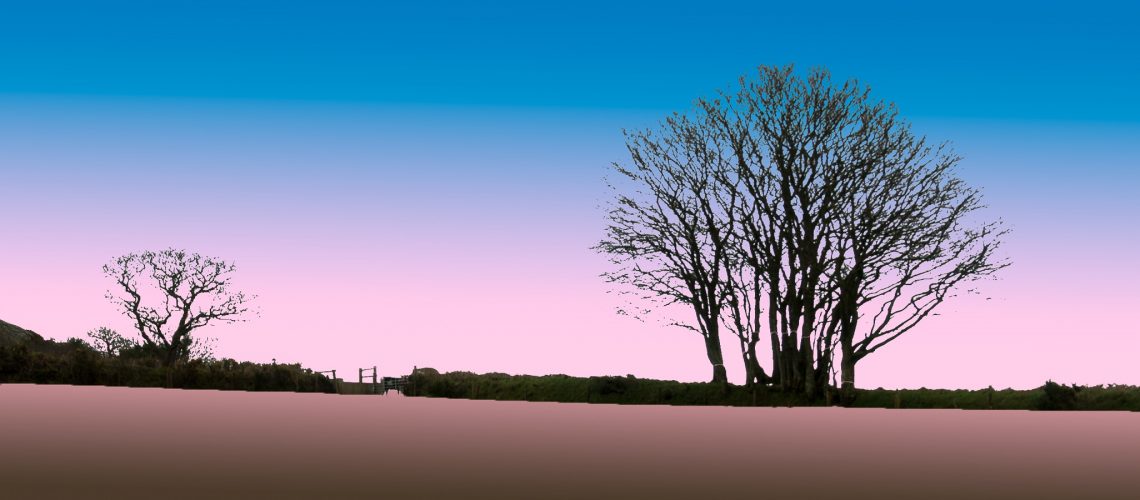If you are not familiar with Richard’s work do pay a visit to his site by clicking on the button below.
In their simplest form Linocuts are two-colour representations of a scene, a background colour (the colour of the paper on which the linocut is printed) and a foreground colour, the colour applied to the linocut block that is then printed on the paper.
My image of people climbing up to the top of Blackingstone Rock and the image of Okehampton Castle use this two-colour format.
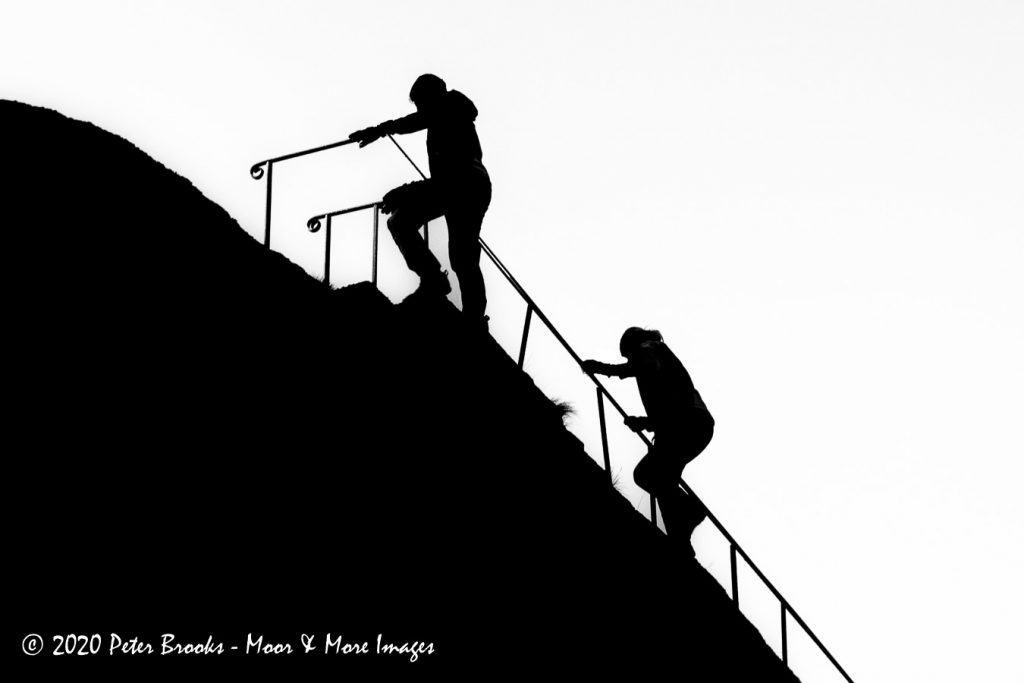
Blackingstone Rock, between Moretonhampstead and Bridford, is unique among the Dartmoor Tors in having a ladder up to its summit. From the top there a great views in all directions. There are also some great ‘rock basins’ on the top of the Tor.
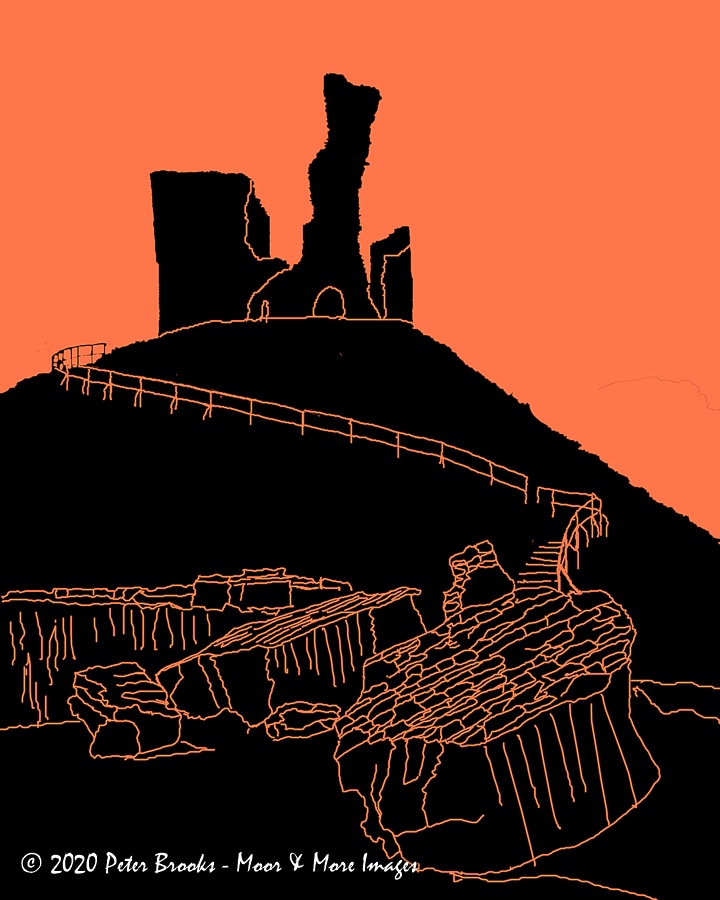
Okehampton Castle is a delightful ruin. Enough remains at the top of the hill to afford it some grandeur, Below there are some large chunks of fallen masonry that show just how massive the original walls must have been.
The paper on which a Linocut is printed does not have to be a single colour. Print makers often produce beautiful graduated colour backgrounds by pre-printing the paper. This is often done by merging two or more colours on the print plate.
Simple-shaped objects, like the burial chamber at Petre Ifan in Pembrokeshire, can produce dramatic, stylized images when combined with a strong and colourful background. My images use the two-tone background approach to give some concept of earth and sky.
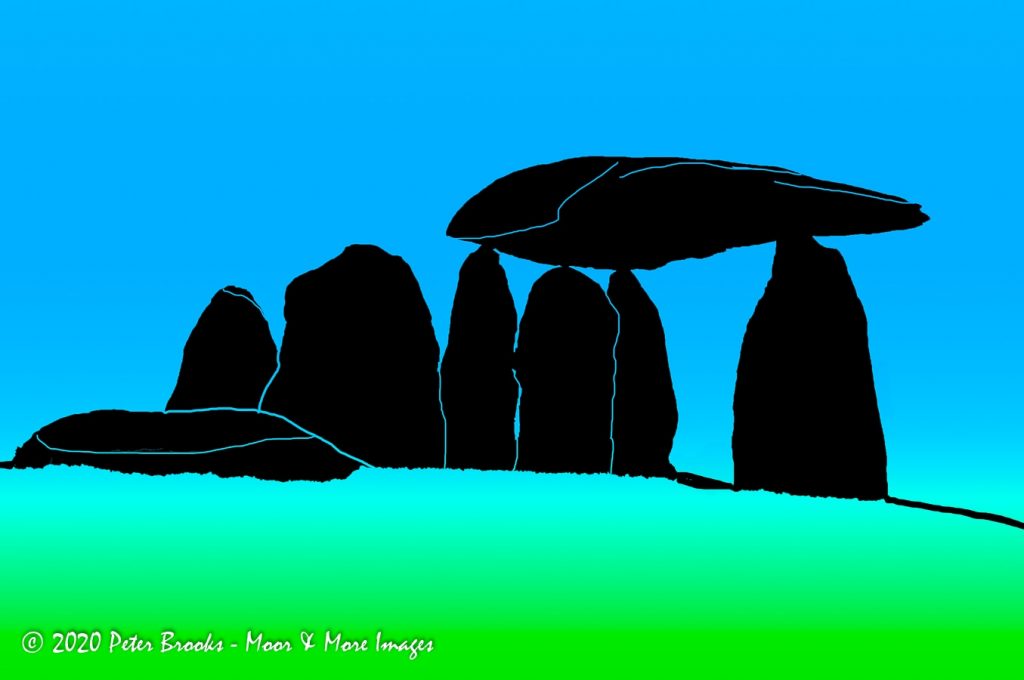
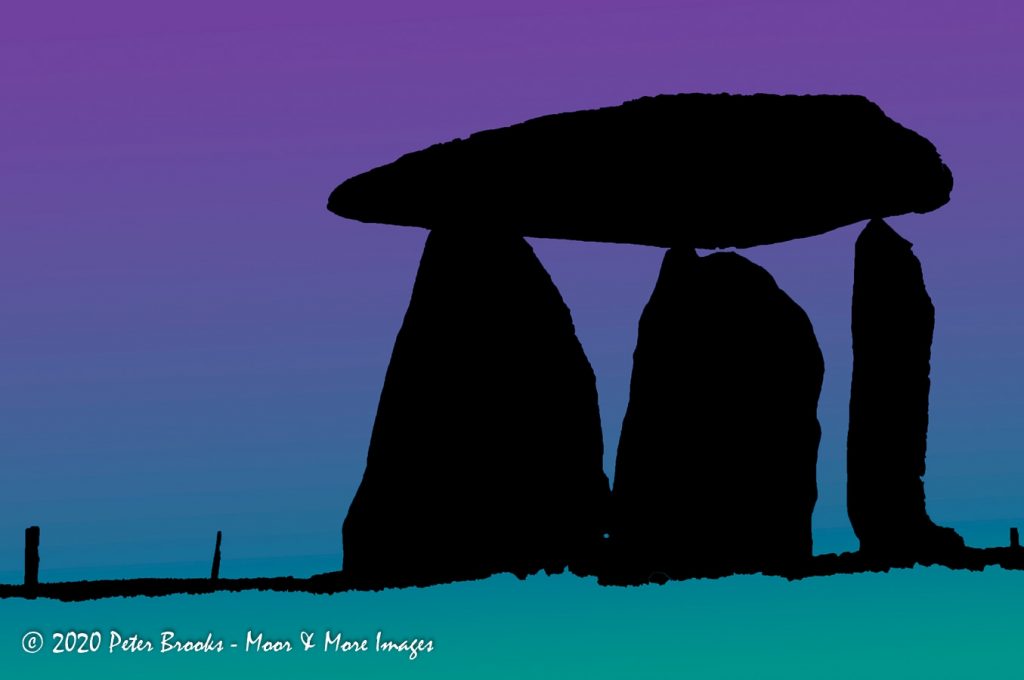
Trees are a challenge! Even if the original image has been constructed to produce an interesting silhouette, extracting the tree from its background requires practice. However, I found it was possible to create some interesting images. The trees below were all photographed on Dartmoor.
The images below are an homage to Richard Shimell’s painstaking linocut masterpieces.
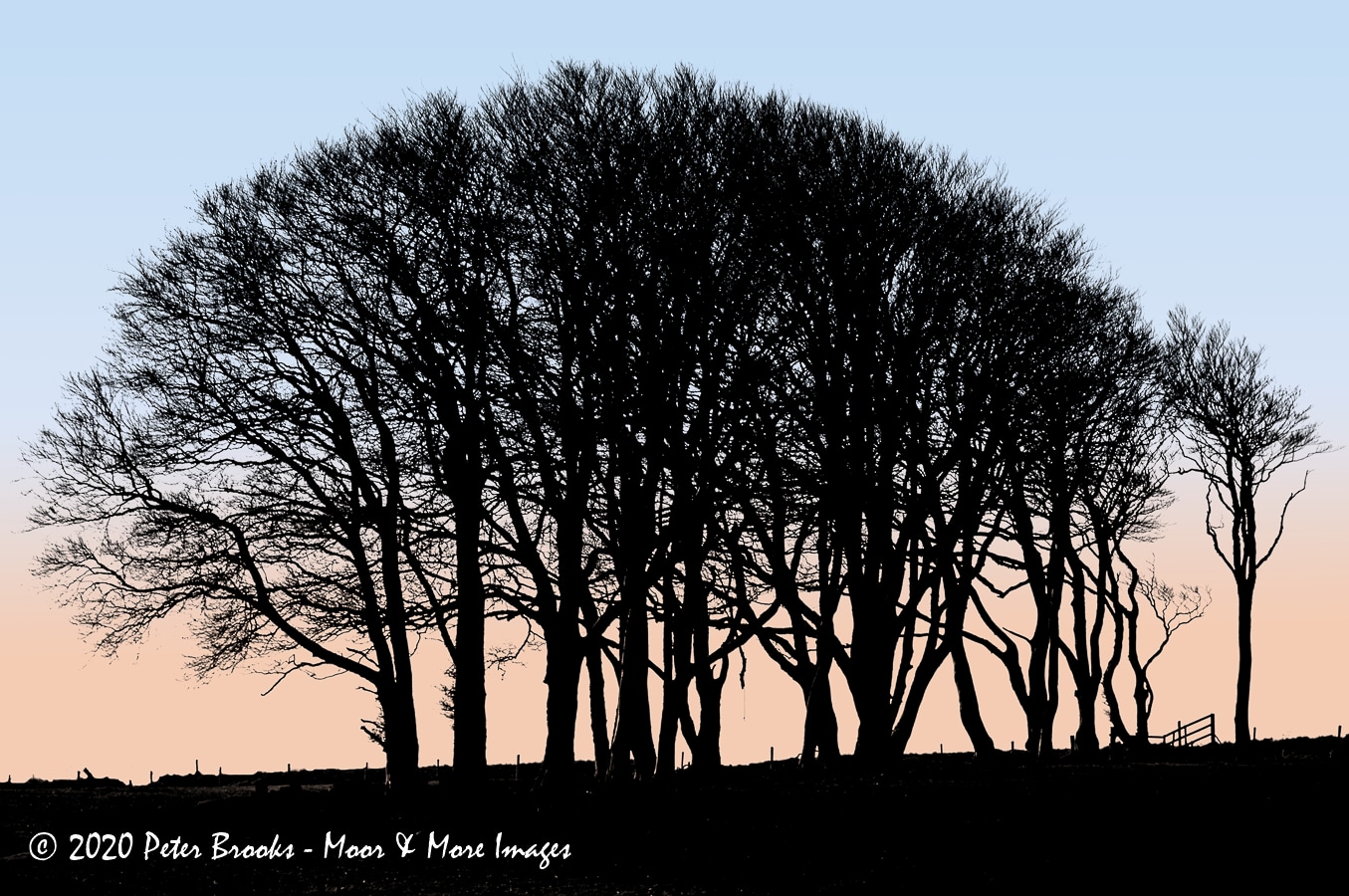
Trees near Powder Mills.
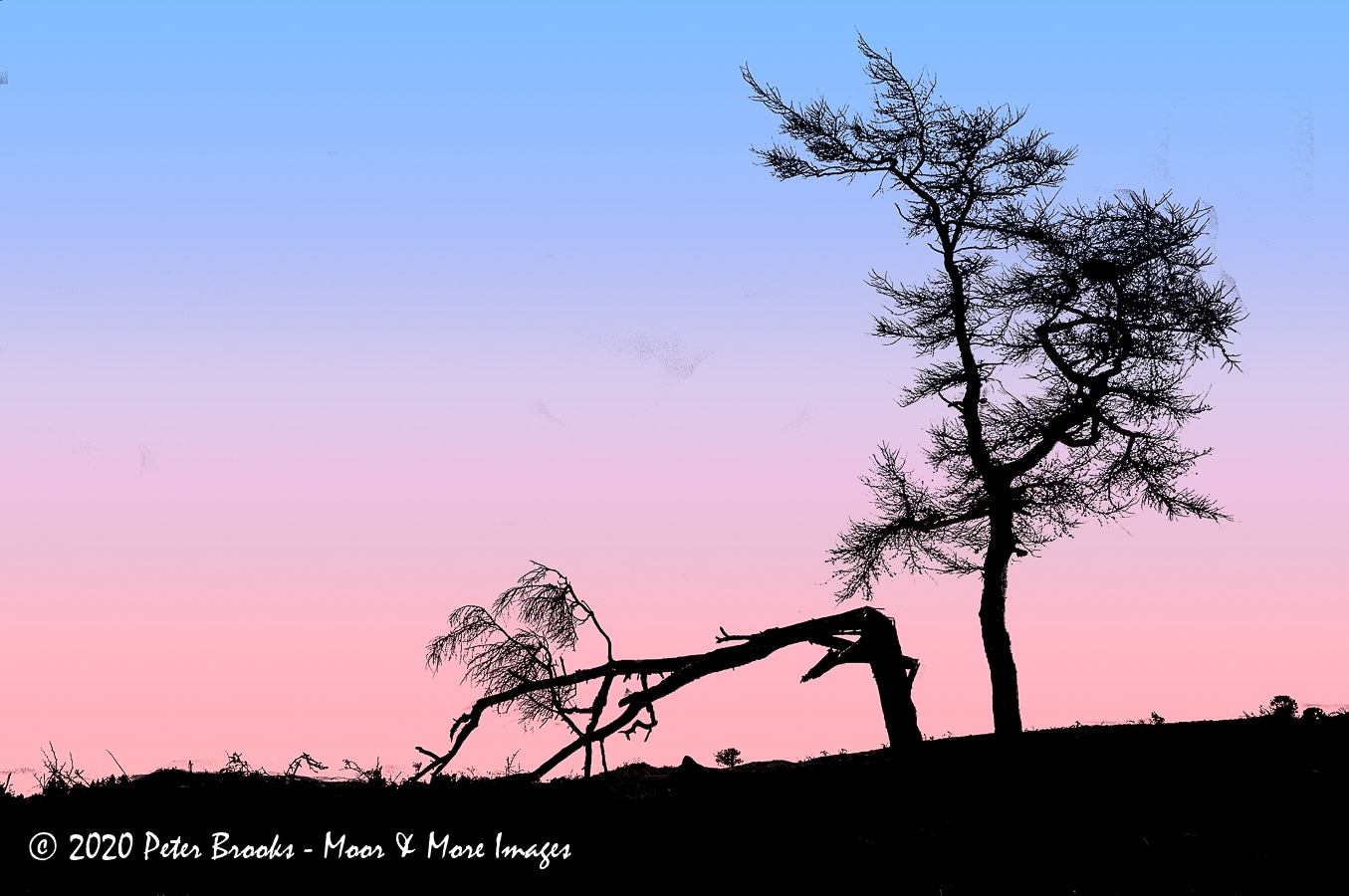
Old Fir trees near Haytor Quarry
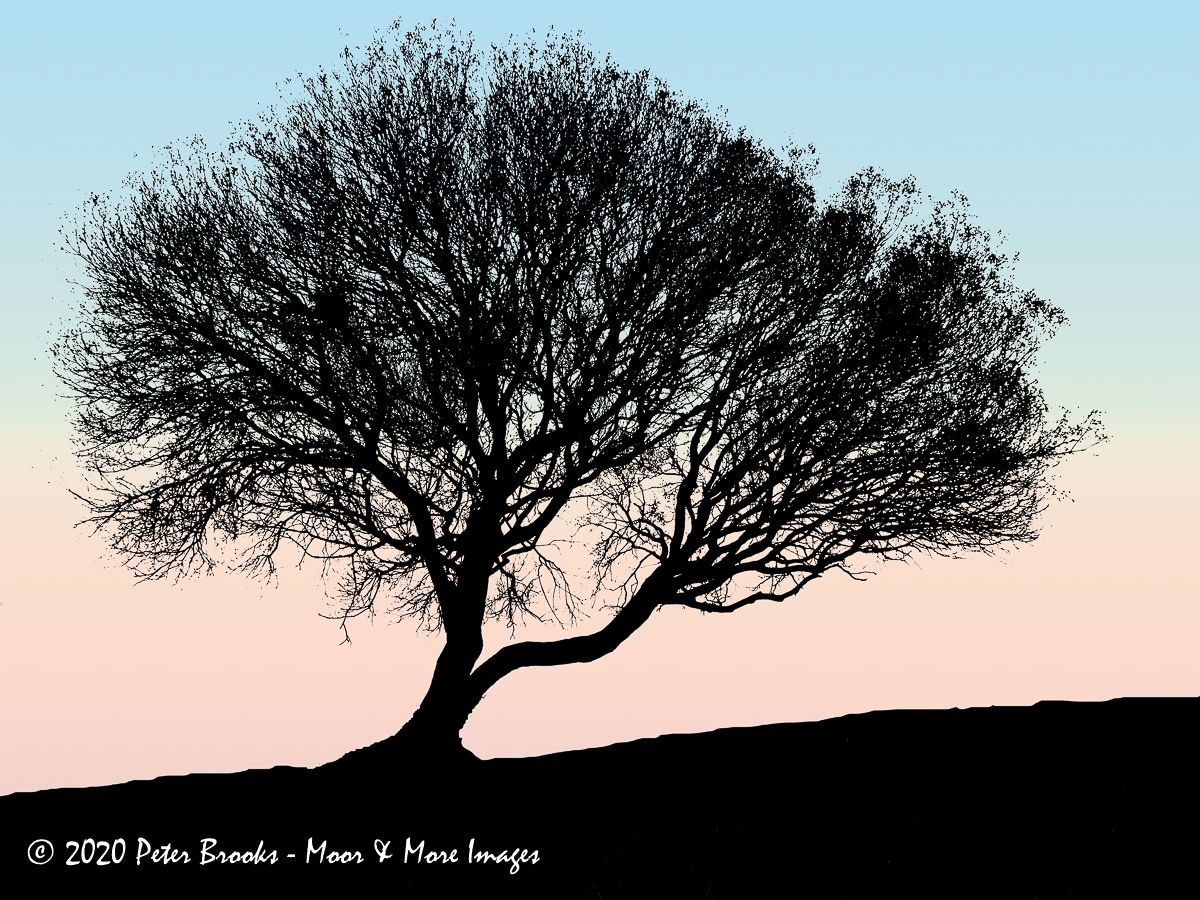
Lone tree on Plaster Down
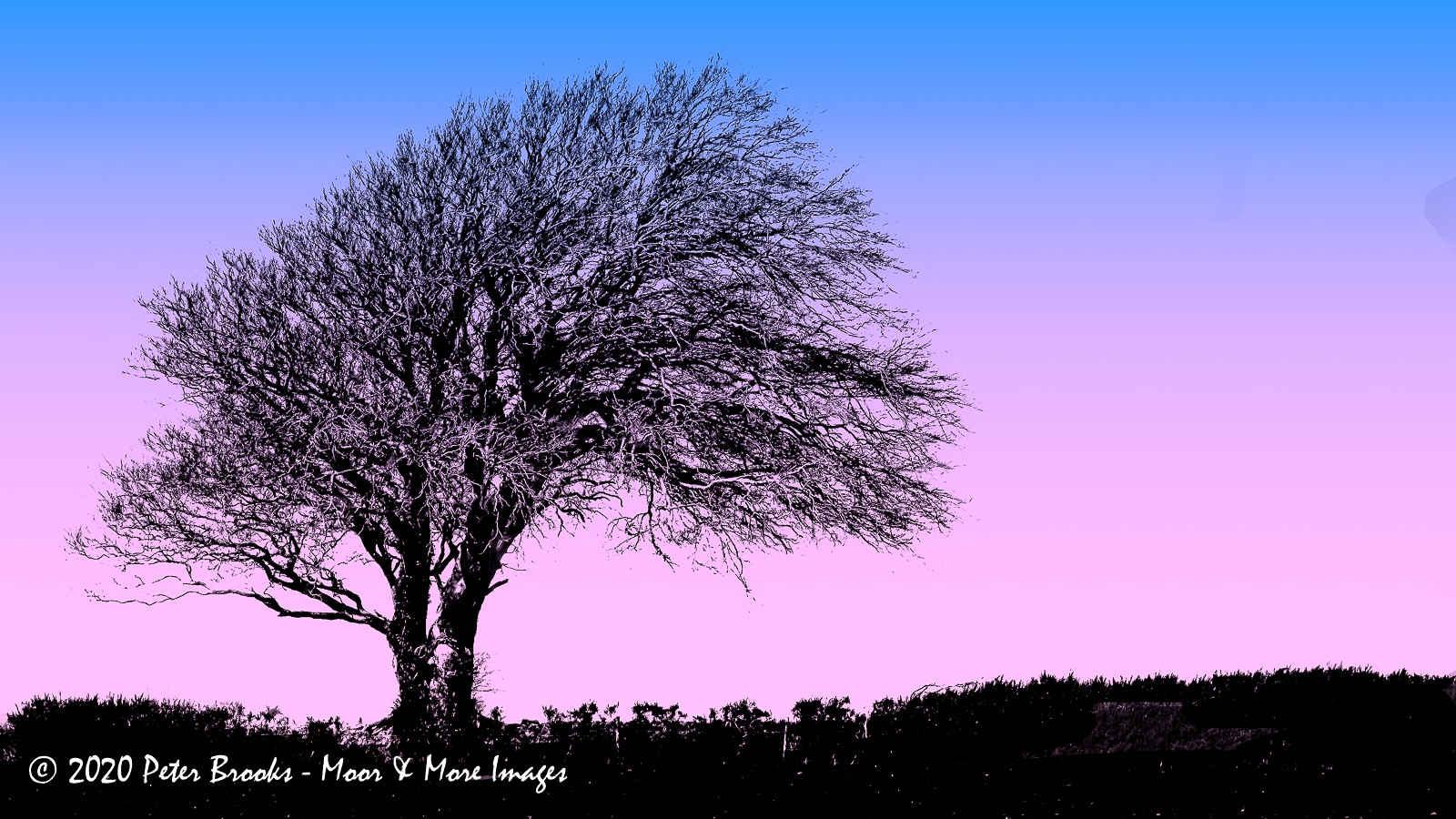
Hedgerow tree near Heltor
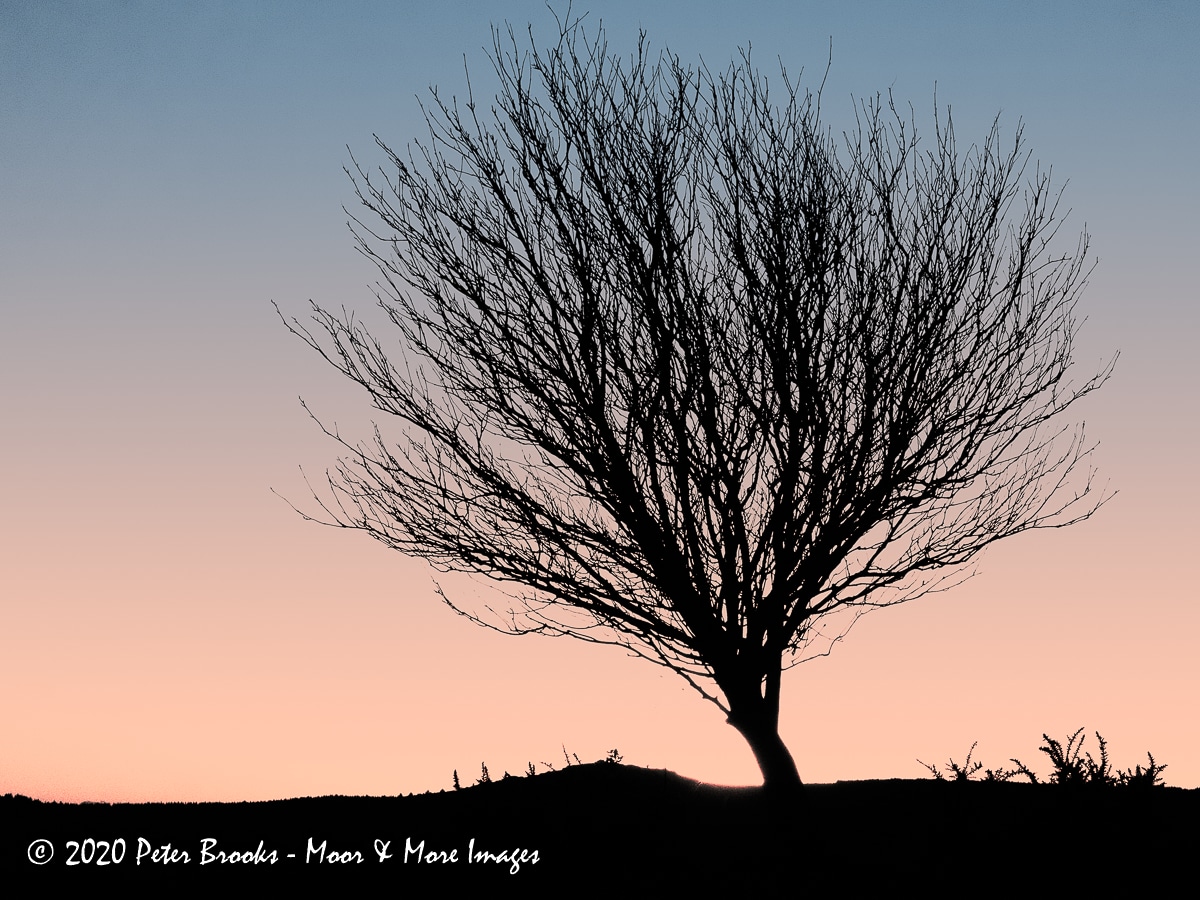
Lone Tree on Cator Common
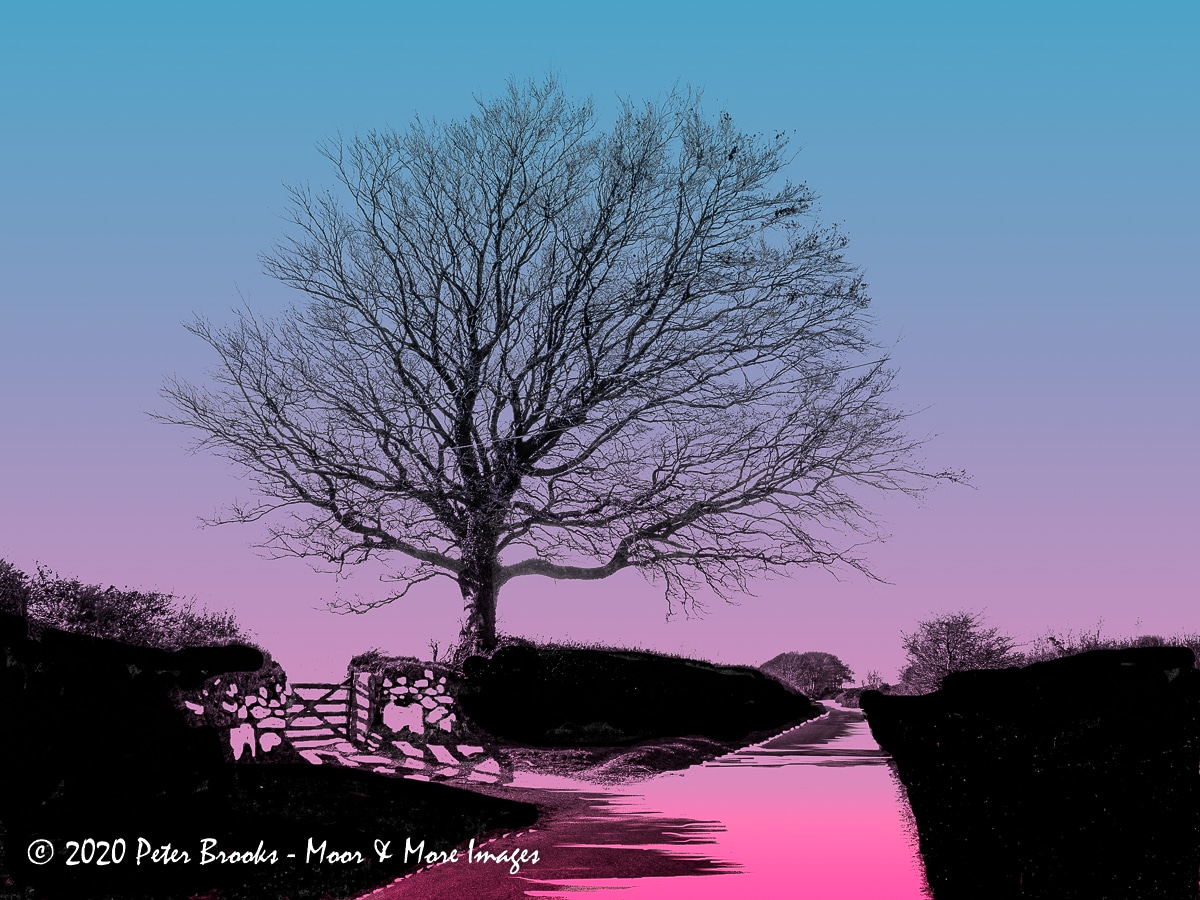
Hedgerow tree near Jay’s Grave
